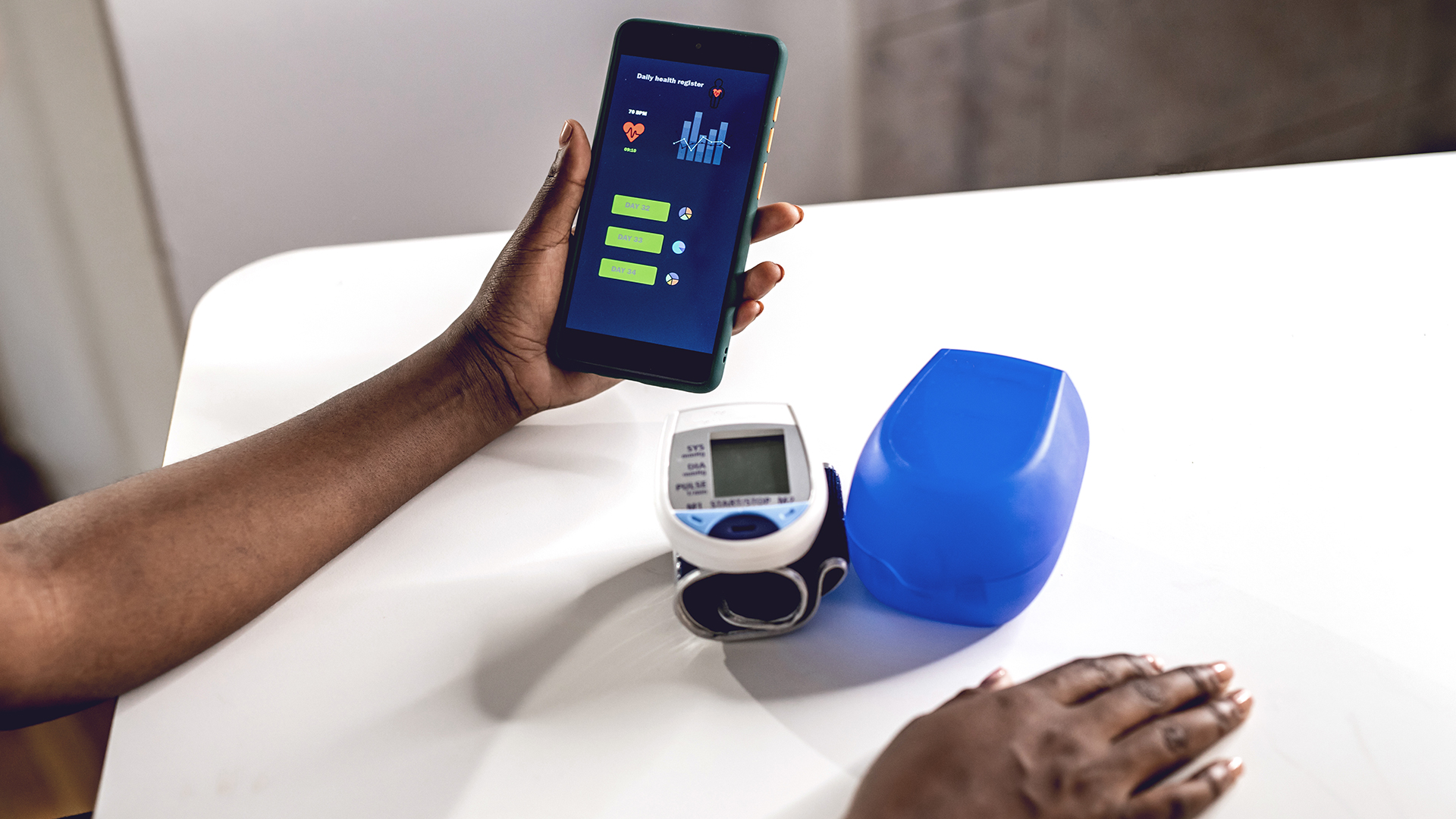For years, digital health has promised to transform healthcare delivery, outcomes and patient experience, a promise under mounting pressure as patients come to expect connectivity in their day-to-day lives. As noted in another ZS article, medtech manufacturers increasingly recognize the opportunity with digital and connected health technologies.
Many industries, especially tech, have a long history of embracing partnerships to supplement their capabilities and expand the value of their digital products and solutions. You need only look at all of the apps on your smartphone to see the benefits of partnerships for consumers. However, medtech players appear relatively averse to partnerships in this space, with more than 90% of medtech executives suggesting building or buying as a primary strategy for digital expansion. This figure feels out of balance given all the capabilities needed to succeed in digital health at scale. At ZS, we believe there is an opportunity for medtech players to leverage partnerships more frequently—and more effectively—as the industry continues to expand into digital health solutions.
What’s behind medtech’s aversion to partnerships?
There are likely countless justifications made in medtech board rooms and within product teams for why buying or building alone is the path that maximizes value for the organization. At a macro level, we see a few primary drivers for medtech’s aversion to partnerships:
- DIY culture. Medtech manufacturers historically have defaulted to internal research and development, a DIY culture traditionally focused on improving features and the benefits of hardware. Digital health products may seem deceptively close to traditional medtech, so there may be a belief that they can be “easy” to build. However, medtech may fail to appreciate that the approach to digital requires a very different mindset, value story, development process and commercialization approach than traditional products.
- Desire for control. Medtech also has a strong desire for control in product development and commercialization, largely driven by its desire to protect IP, ensure regulatory compliance and preserve customer relationships. Digital health partners could be perceived as a loss of control for medtech in each of those domains.
- Perceived partnership complexity. While medtech may be comfortable entering into more traditional partnership arrangements with providers and distributors, for example, there are often more options and unique complexities in structuring and implementing digital health partnerships: exclusive vs. nonexclusive arrangements, closed vs. open models, infrastructure requirements for data sharing and governance, among others. There may be circumstances where partners also are considered competitors if both medtech manufacturers and digital partners offer similar solutions (especially in cases of “coopetition”). These nuances may make partnering in digital health appear more complex—and potentially more unappealing—than alternatives. The perception is not always accurate and some alternatives prove to be similarly or even more complex than partnering.
The good news is that these barriers can be overcome. Let’s look at an example of an organization that has succeeded in establishing partnerships to drive incremental value to customers and the benefits that has created.
The value of medtech partnerships: A diabetes case study
Dexcom represents a recent example of a medtech manufacturer not letting perceived barriers get in the way of driving value to patients. Dexcom, a leading continuous glucose monitor (CGM) manufacturer has embraced working with partners, including insulin pump manufacturers, and has stood up a robust capability to support its network of connected partners, all in service of providing additional value to patients.
In 2014 and 2015, Dexcom announced nonexclusive partnerships with Animas and Tandem to enable integration between Dexcom CGMs and pumps, forming the first insulin pump and CGM combination that used a screen interface to display both glucose trend and insulin delivery information and enabling automated insulin dosing (AID). Since the announcement, Dexcom has partnered with several other insulin pump and pen manufacturers and AID applications with Insulet, Eli Lilly and Tidepool. This has allowed Dexcom to focus on enhancing its CGM technology, accelerate value to patients through partnerships, diversify its suite of partners and offer customer choice.
The value generated for Dexcom is well-known: a dominant share position among diabetes patients using an insulin pump, increased value per patient (higher retention), internal infrastructure, capabilities and processes to enable other types of partnerships (e.g., Glooko, Rimidi and Garmin) and a differentiated brand of innovation and connectivity.
It’s important to contrast Dexcom and other CGM manufacturers’ approach to partnerships today with the approach taken by CGM and insulin pump manufacturers historically. Previously, CGM-insulin pump connectivity was built on proprietary solutions and closed systems. It became clear that by not partnering, no single player was sufficiently advanced across all domains to address patient needs. Dexcom and the industry as a whole were able to learn and pivot to embrace partnerships. We believe other areas of medtech can benefit from a similar evolution.
The benefits of digital health partnerships
The Dexcom case study provides indicators of the types of value that can be unlocked through partnerships. Broadly speaking, we see five categories of benefits that can be derived through digital health partnerships:
- Expanded value proposition. Partnerships can grow a value proposition that otherwise would not have been possible. A diverse array of partnerships and integrations can increase choice and allow customers to customize solutions. In the Dexcom example, healthcare providers and patients have the choice to integrate Dexcom CGMs with multiple types of insulin pumps such as Omnipod and t:slim and offer countless digital health integrations to drive tailored value to patients. All of this reflects positively on Dexcom’s brand and fundamental value proposition as the most connected CGM system.
- Improved effectiveness. Partnerships allow large medtech manufacturers to leverage their core competencies most effectively and partner for domains outside their core. This comes with recognition that it is very difficult to provide best-in-class solutions across different hardware and software types along the continuum of unmet customer needs.
- Accelerated speed and reduced cost of development. Partnerships allow medtech manufacturers to fast-track development in digital health products and potentially lower investment requirements. Imagine the timeline and investment required if Dexcom had needed to create its own insulin pump and dosing application to offer AID. By focusing on its CGM technology and allowing other players to build other components of the system, Dexcom can accelerate the overall time to market for AID and CGM-connected applications for patients.
- Diversified bets. Partnerships allow a more efficient way for medtech manufacturers to diversify across multiple market players and across solution areas. This also allows medtech companies the option to pivot or expand the scope of an agreement based on performance and market signals, especially for immature digital health markets. One current example of this may be in AI, where there’s no shortage of AI startups that claim to offer innovative approaches to solve old problems in healthcare. Yet, which of these AI companies will win, and how many will be left standing when the dust settles, is unclear. A medtech manufacturer could theoretically partner with multiple AI companies across different use cases. As winners emerge, medtech organizations have a higher probability of sharing in that success.
- Managed risk. Medtech organizations are historically risk averse. Partnerships allow them to enter new markets while limiting downside risks. Imagine a circumstance where a medtech manufacturer wants to create an innovative digital health solution for a subsegment of customers. By building that new solution on its own, the medtech manufacturer bears the full cost and risk of the research, product development, regulatory filings and commercialization. That level of investment and risk may not be justifiable. By partnering, many of these investments can be shared by another organization that may be better equipped to execute select steps. This could reduce overall investment and risk exposure, leading medtech manufacturers to pursue more initiatives in digital health.
How can medtech make digital health partnerships work?
While partnerships present many attractive benefits, they’re not without potential pitfalls that may erode value. To maximize the impact of digital health partnerships, ZS recommends these best practices for medtech manufacturers exploring digital health partnerships:
Clearly define the digital health strategy, with implications and guidance for partnerships
Medtech’s approach to digital health historically has been fragmented, without a clear grounding in a broader strategy that would address customer needs at scale. Medtech manufacturers may enter into partnerships without a compelling integrated value proposition or on an ad hoc basis, addressing needs of few customers or in response to a random outreach from a prospective partner. Additionally, partnership evaluations may not include long-term implications. In fact, several medtech players have entered into partnerships with companies that may have highly adjacent or potentially competitive offerings over the long term. Medtech must define its digital health strategy upfront as a part of broader corporate and portfolio strategy, with clear implications for partnership objectives.
“Medtech must define its digital health strategy upfront as a part of broader corporate and portfolio strategy, with clear implications for partnership objectives.”
Know your strengths and weaknesses
Medtech manufacturers have valuable strengths that serve as the basis for their success: deep expertise in regulatory environments, strong brand reputation with customers and significant experience creating products around clinical workflows. Yet, medtech manufacturers may not have requisite capabilities and ways of working to also develop best-in-class digital health products such as agile development and co-creation with users and customers. Medtech should inventory their strengths and weaknesses as it explores digital health partnerships, both to inform the desired value it is bringing and define key partner selection criteria to bridge capability gaps.
Invest for value creation and capture while ensuring equitable value distribution
Partnerships rarely occur among equals. Very often, there is an asymmetry in the value generated from one partner to another, and the partnership terms may not ensure equitable distribution of value created by individual parties. Medtech manufacturers must understand value on both sides, stratifying partners based on value and corresponding investment and finding ways to offset asymmetric value such as profit-sharing and fees.
Create and track value metrics before and during the partnership
Partnership value drivers and key performance indicators are not consistently developed during evaluation and tracked over time, limiting the understanding of partner success and opportunities to improve. Leading and lagging indicators ideally are developed and aligned on in collaboration with a partner and discussed in ongoing business reviews.
Set clear organizational roles, responsibilities and processes for partnership success
Manufacturers may not adequately define roles, responsibilities and collaboration models with the key success factors needed to support the digital health partnership. This can be exacerbated by the fact that the culture and ways of working of a digital health startup could be at odds with that of an established medtech company. Medtech must ensure the right roles, go-to-market models and incentives are in place to support and promote the total value of the partnership.
The way forward is together
At ZS, we recognize that innovations in digital health are accelerating, and medtech manufacturers have an opportunity to drive these innovations to deliver value to customers. We encourage medtech manufacturers to explore partnerships more frequently, considering the benefits, risks and best practices of partnerships.
Add insights to your inbox
We’ll send you content you’ll want to read – and put to use.














